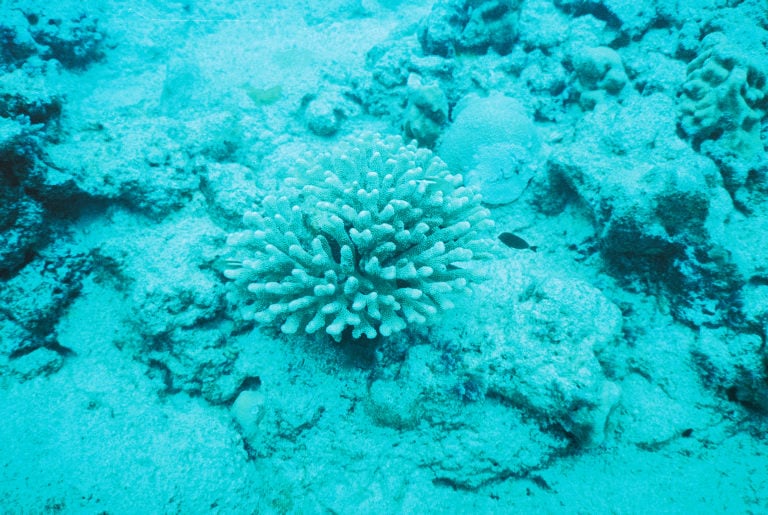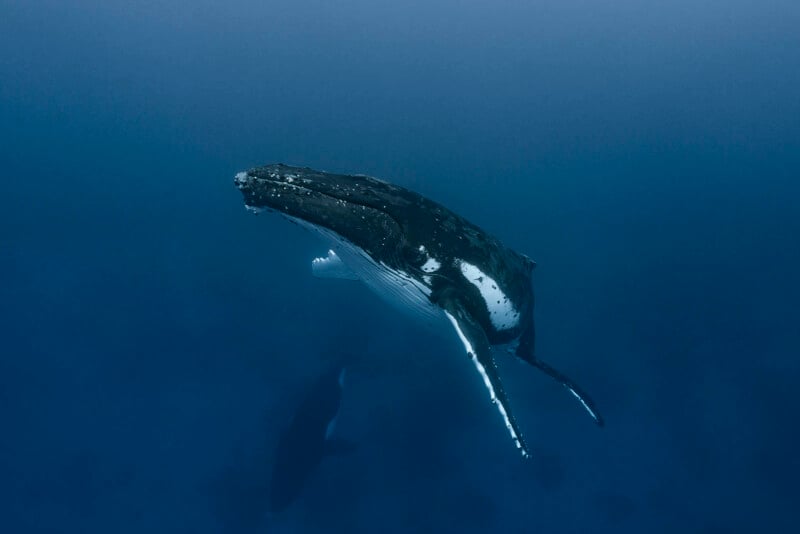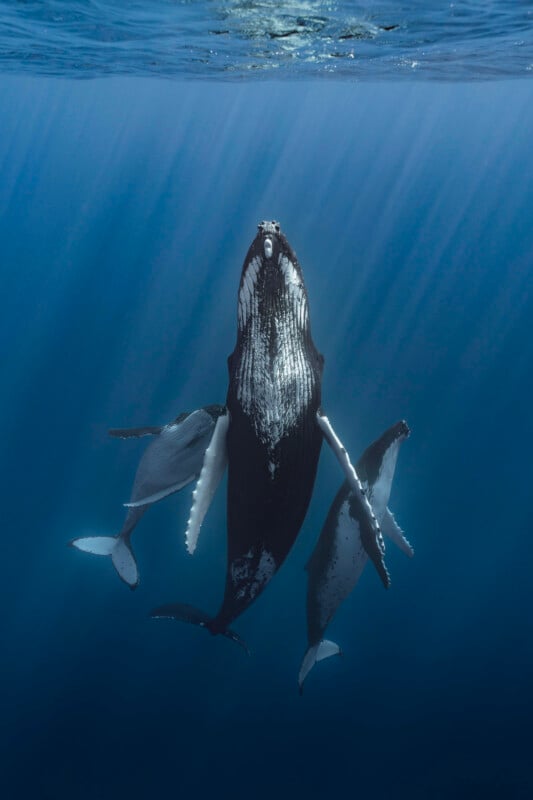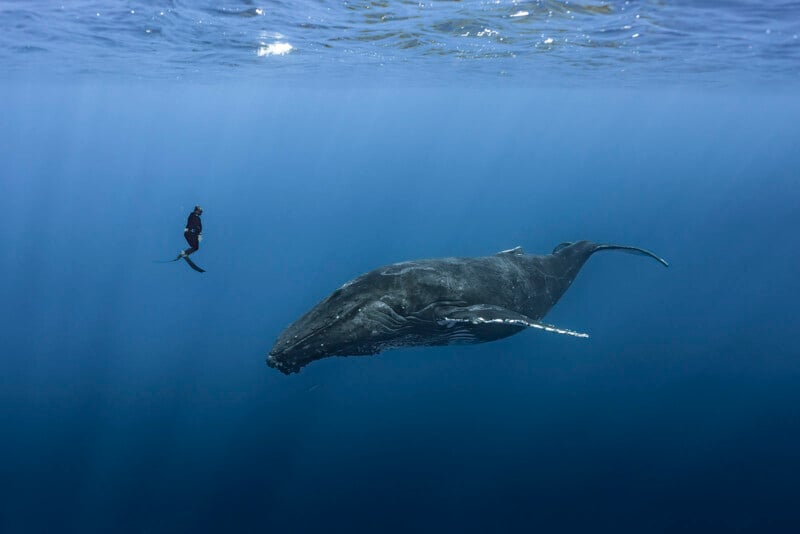Nikon’s 40-Year-Old Underwater Film Camera Still Offers a Unique Experience
![]()
On my recent trip to French Polynesia, I decided to do something new that I’ve been wanting to try for a long time: I brought along the Nikonos V, Nikon’s legendary amphibious 35mm camera from the 1980s. That meant no live preview, no autofocus, and no confirmation that anything I was shooting would actually turn out; just 36 frames of film, a light meter, and the quiet peace that comes with freediving and taking photos.
What is the Nikonos?
The Nikonos series was the evolution of the Calypso camera which was the brainchild of the legendary Jacques Cousteau.
“In May 1961, LA SPIROTECHNIQUE, a French offshore machinery development company, developed a new type of 135-format watertight camera, the Calypso (named for a nymph in Greek mythology), and contacted us through what was then Teikoku Sanso KK (presently Teisan Co.) about commercial production and marketing,” Nikon explains on its website. “We at Nikon considered this camera as an All-Weather Camera for its highly water-tight, pressure-resistant, and corrosion-resistant properties and other durable mechanisms not achieved by any other cameras, and decided to sell it under the brand name of Nikonos.”
![]()
Nikon formally announced the camera in 1963 at the Photokina show, where it was showcased hanging in an aquarium surrounded by live goldfish. The Nikonos was originally designed for divers, built to be fully waterproof without any external housing. It’s compact, rugged, and beautifully simple. For decades, it was the go-to camera for underwater photographers: anyone and everyone from scientists, explorers, and even National Geographic shooters.
Why the Nikonos V?
There’s a cult-like reverence for the Nikonos today, especially among film enthusiasts and ocean lovers who romanticize the tactile challenge of shooting without instant gratification. I’d seen the images others had made with it — dreamy, perfectly grainy, in B&W and color — and wanted to see if I could capture something similar.
![]()
![]()
Film photography has always been a grounding experience for me. You slow down, think more, and accept that not every shot will work out. But doing that while holding your breath and battling all the elements that come with being underwater? That’s a whole new challenge I was excited to accept.
You obviously cannot buy a Nikonos camera new anymore since production of the entire line ceased in 2001. On the used market, it is easiest to find the more recent models, in my case, the Nikonos V (someday I’d like to try the Nikonos RS AF, too). KEH had a Nikonos V in excellent condition available, along with a 35mm f/2.5 lens. I pulled the trigger.
Freediving with Film
Shooting underwater is already quite demanding, even with modern equipment, so shooting film underwater with a second-hand camera from the 1980s while freediving is, I argue, borderline crazy. While it’s often referred to as a rangefinder-style camera, the Nikonos V is actually a scale-focus camera, which means you don’t get any focusing aid when looking through the viewfinder. You’re guessing, estimating your subject’s distance, setting your focus manually, and hoping for the best, all while underwater. How fun!
![]()
To make things more challenging, I was freediving (not on scuba), which meant every shot required a single breath. I’d float at the surface and visualize my shot, take a breath, dive down 20 or 30 feet, frame my subject, and click the shutter before gently resurfacing. Sometimes I’d manage two shots before I had to surface. Other times, I’d reconsider the frame and resurface without snapping anything.
![]()
My biggest fear once I actually arrived in French Polynesia was whether the camera would flood. Even though I was buying a kit that was in “Excellent” condition by KEH standards, the camera is nearly 40 years old, and there are very few technicians in the world who you can send Nikonos cameras for pressure testing and maintenance. Based on everything I’d seen on social media about the camera, I prepared myself emotionally to accept that the camera could very well flood on my first dive with it.
![]()
But much to my surprise (and joy), the camera didn’t flood!
The first few dives were pure trial and error. I wasn’t sure how the light would translate, how the colors would shift, or how my film would hold up. I also had no clue whether my focus distance estimates were correct.
![]()
But slowly, the rhythm of shooting the Nikonos V underwater started to make sense. The camera is surprisingly ergonomic underwater, even though it feels like a metal brick above water. Its big metal dials are easy to grip, and the 35mm lens gives just enough width for environmental shots while keeping subjects close and intimate.
The Joy of Film
Once I got over the fear of the camera flooding, I focused on actually taking photos. The camera has aperture priority mode and a built-in light meter to show you what shutter speed the camera has chosen for you, making underwater operation pretty simple. All you have to do is set the aperture, estimate your focus distance, and the rest is taken care of.
One of the best and worst parts about shooting film, as we know, is that you have no idea what you’ve captured until days or, in my case, weeks later. Since I was in French Polynesia for three weeks, I wouldn’t be able to see any of my photos until well after I flew home.
When I finally got the film developed, I was stunned, in the best way! The results weren’t always technically perfect, but that’s exactly what I love about them. The grain, the haze, even the occasional motion blur just hit right.
![]()
I ended up shooting three rolls of Kodak Tri-X 400 and one and a half rolls of Portra 400. Surprisingly, I prefer the B&W photos over the color ones, but I suspect this was an issue with my film shop during scanning, and I haven’t gotten a chance to get them re-scanned. The color rolls came out extremely tungsten blue, which I initially thought was probably because I took a mix of underwater and land shots, so the same color correction setting may have been used when scanning the entire roll, as opposed to being applied selectively for each shot.


After chatting with a few friends who also shoot film underwater, I found that my issue with the color film looking strange was because I was likely shooting too deep or without enough light, which is why everything came out excessively blue. So in the future, I’ll keep color film for shallower water, and most likely I’ll stick to black and white for deeper diving. I’d also like to experiment with higher ISO films in deeper depths to see how that comes out.
Film vs. Digital for Underwater Photography
The other challenge I came across with the Nikonos V was when to bring the Nikonos on a dive as opposed to my digital setup (Sony a7RV in a Marelux housing). There’s a precision to digital underwater photography that’s hard to argue with. You can balance colors, control white balance, and shoot endlessly without worrying about film costs. Not to mention, you likely won’t miss the shot on a digital camera, but once you run out of frames in a roll of film, you’re basically done for the day. Reloading a new roll of film on a boat usually isn’t possible due to the risk of getting salt spray into the camera.



But on the other hand, film forces you to surrender a lot of that control. You become hyper-aware of your surroundings, like the direction of the light, the way a fish moves, the shape of a coral amidst a bustling reef. You stop chasing “perfect” shots and start appreciating fleeting ones. Every frame feels earned and meaningful.
![]()
The Nikonos reminded me that photography isn’t always about precision. It’s about presence.
Final Thoughts
Taking the Nikonos V freediving in French Polynesia wasn’t about nostalgia or chasing a retro aesthetic. It was about slowing down and remembering what it feels like to make photos for the sake of wonder, not for perfection or performance.
In a world where everything is instant — from autofocus to social media feedback — there is something extremely rewarding about swimming into the unknown with nothing but a metal camera, a roll of film, and a deep breath.
![]()
Would I do it again? Absolutely. I might even reach for the Nikonos more than my digital camera next time.
Image credits: All photos by Sarah Teng
Full disclosure: KEH is a supporter of the PetaPixel YouTube channel and assisted in the process of acquiring the Nikonos V, but had no input on the direction of this story, was not consulted on the content, and never has any input on PetaPixel’s editorial direction.